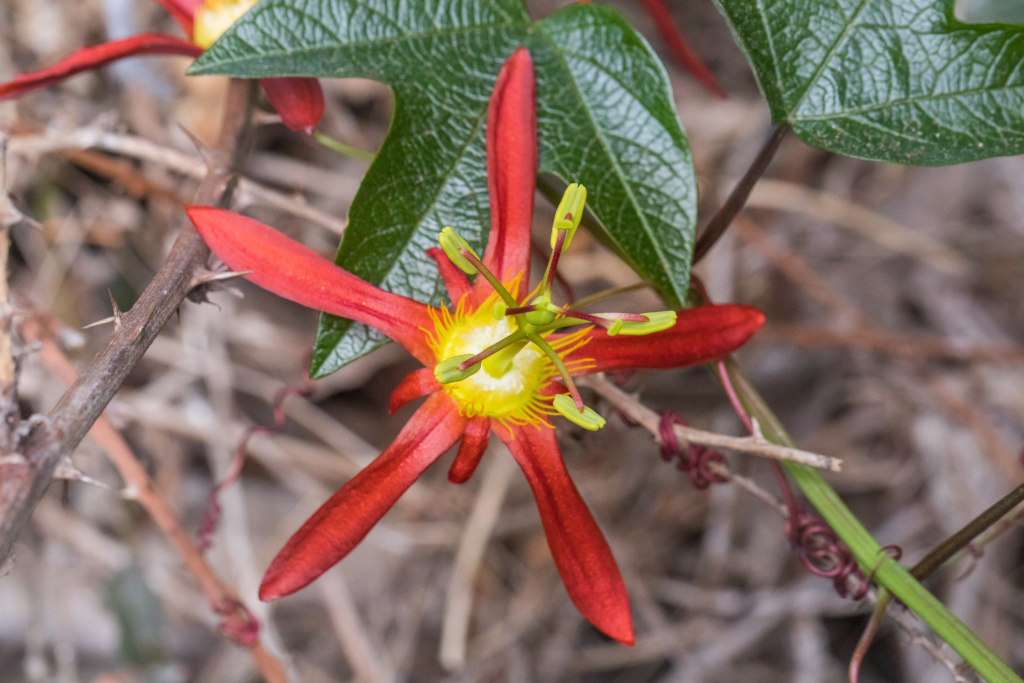Passifloraceae
Herbaceous or woody vines, with simple, axillary tendrils. Leaves alternate, usually with glands on petioles and often on margins; lamina lobed, digitate or not lobed; stipules minute or conspicuous. Inflorescence 1–many-flowered. Flowers sessile or pedicellate, regular, bisexual (in Victoria); sepals and petals 5, inserted on rim or saucer-shaped or tubular hypanthium; corona (in Victoria) present between perianth and ovary-stalk, consisting of various processes, appendages or scales; stamens (in Victoria) 5 and united with ovary-stalk; anthers 2-locular, dehiscing longitudinally; ovary superior, often on well-developed stalk, 1-celled; placentas 3, occasionally 5, parietal; styles 3 (in Victoria). Fruit (in Victoria) a berry, mostly indehiscent; seeds 1–many, pitted, surrounded by fleshy or membranous aril.
About 10 genera, predominantly in tropical and subtropical regions with most species indigenous to America and Africa; 2 genera represented in Australia, 1 in Victoria.
Entwisle, T.J. (1996). Passifloraceae. In: Walsh, N.G.; Entwisle, T.J., Flora of Victoria Vol. 3, Dicotyledons Winteraceae to Myrtaceae, pp. 376–379. Inkata Press, Melbourne.
 Spinning
Spinning


